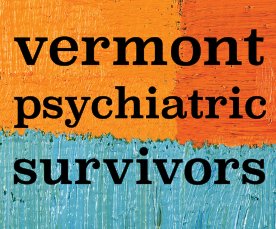Commentary by Laura Shanks
“Say what you want, it is a jail. Am I locked up? Yes. Are their guards? Yes. Can I leave? No.”
“I think the whole system is a mess. No one has explained anything to me.”
“I just feel very controlled. If I had been given the option to leave on my own accord, I can’t say things would have ended up any differently, but at least the choice was mine.”
These are the words of our peers currently under involuntary orders, or civil commitment, in state-designated psychiatric hospitals. Confusion, fear, helplessness, sadness, and anxiety are just a few of the side effects. This is the impact of court-ordered hospitalization. This is a glimpse into an archaic practice that often turns a cry for help into a prison sentence.
A majority of the peers I work with at Vermont Psychiatric Survivors are either currently under involuntary psychiatric hospitalization orders or have been in the past. During my three years with VPS, I have observed its impacts and have assisted peers in working through the trauma it produces.
Civil commitment takes psychiatric practices to the extreme, revoking basic rights and placing individuals into psychiatric care against their will. While the laws around this vary from state to state, the general premise is that when someone is deemed a danger to themselves or others, a concerned party can file for an emergency examination. If a doctor, in a short assessment, agrees that the individual in question is a danger, they are taken into “temporary custody” and transported to a hospital.
“Unsafe,” however, is a vague term and I’ve certainly seen this power abused. What is meant to be a statute to save lives can, like everything else, be misused, and a short lapse in judgment or a misspoken word can leave someone locked up in a psychiatric hospital for months. This experience is rarely therapeutic.
“It’s just traumatic,” a peer, back in the community after several involuntary admissions, said. “Everything is uncertain, and you’re already in a crisis. It gives me a mental breakdown, not a break, when other people make the decision for me to be hospitalized.”
This has become one of the most challenging and heartbreaking aspects of my job and one of the most complicated to navigate. As it’s a legal matter, aside from being able to advise peers of the few rights they have left and offer support, I am generally helpless. The most I’ve been able to do is offer continued care and peer support to help them work past their experiences when they are back in the community.
My own experiences with involuntary admission were over 18 years ago as an adolescent, and I still remember the unnecessary and traumatic experience of being strip-searched and handcuffed. What did I and many others learn from this experience? That being sad or sick is punishable and that others can’t be trusted with our feelings.
Ultimately, however, I did need to be hospitalized at that time in my life, and many others experiencing involuntary hospitalization are similarly coming from an acute experience that requires some form of extreme intervention. So how can we make this experience less traumatic? What are the alternatives to involuntary hospitalization? These are the questions I’m left asking, and aside from a complete upheaval of the current system, I won’t claim to have any real answers.
What we can do now, however, is create an open dialogue around these practices. We can create more transparency around the gray areas in the legal system and come together to hold doctors and designated agencies accountable when their powers are abused, while we work to create alternative approaches. Because, as the Zen principle of Wu Wei implies, anything forced will never last and holds no real value.
Laura Shanks is Vermont Psychiatric Survivors’ patient representative for Southern Vermont.

